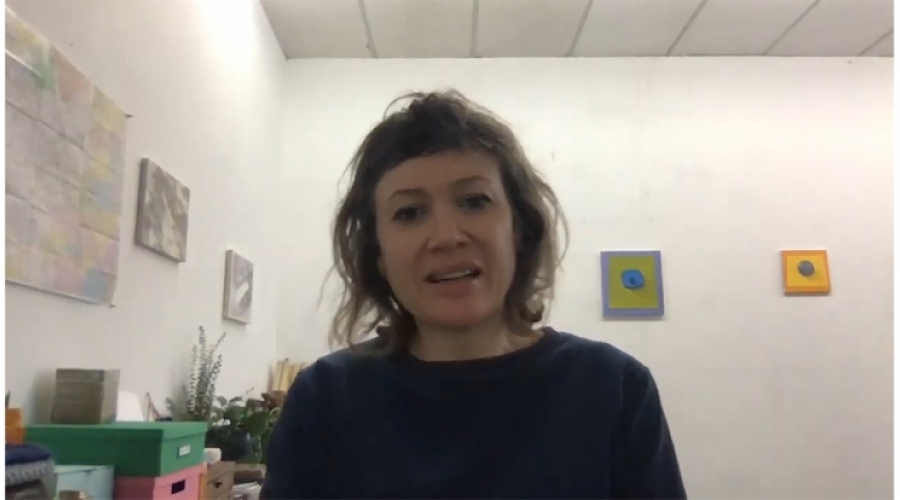
This is the second story in a series about how Otis College’s department chairs, instructors, support staff, and academic leadership are preparing for the remainder of the spring 2020 semester to be conducted online, out of health and safety concerns during the COVID-19 pandemic. To read the first story, about some of the ideas instructors are planning, click here.
Throughout the week, as department chairs and faculty plan to transition their classrooms to the virtual world, there’s been an awareness that many of the digital tools that will be implemented in the remainder of this now online-only spring semester actually leverage behavior students are already adept at on social media, like creating photo and video content, and expressing oneself through comments and posts.
Performance I instructor Scotty Wagner welcomes this idea. “Because performance online is such an integral part of their lives, moving the course from the physical to the virtual presents us with an opportunity to broaden students’ ability to provide input on how the class should proceed,” he says. “I think it’s important to acknowledge students’ unique relationship with social media and the internet by bringing them into the fold as fellow architects of this opportunity.”
For assignments and projects, Wagner will ask students to create performance videos on YouTube and even Twitch, which is a live streaming platform designed for gamers, and is considering allowing for live performances during class sessions on the video conferencing tool Zoom, which has a screen-share function. “Ironically, my most recent completed body of work was entirely dedicated to online performance, so I feel uniquely ready to teach this class virtually,” he says.
Meg Cranston, chair of the Fine Arts program, says that instructor Larry Johnson plans to do his Advanced Critique class by text message, and possibly publish the conversations as a book. “Having written documentation of one’s critiques is very rare,” she adds. “It will be interesting to see if students who are vocal in class will be vocal by text, and if more quiet students will use the texting format more.”
Many instructors are even realizing that virtual classwork will benefit students in ways they weren’t anticipating. Some will record their lessons and make them available for asynchronous viewing, which allows a student to pause and replay parts. For English Language Learners and students with learning disabilities this will be tremendously helpful. “You can’t do that in real life,” says Interim Provost Kim Russo. “You can’t rewind what a professor said over the last two minutes in order to clear up your confusion.” Similarly, instructors also will be posting coursework online, enabling students to continually go back and review it. And during live Zoom lectures, students will be able to use a chat function to virtually raise their hand, clap, or ask an instructor to slow down or repeat something.
Rachel Roske, who teaches the studio class Drawing Form, and who taught online courses for eight years before joining Otis, created a video announcement for her students in which she described the demonstrations she’ll be recording. Whereas in the physical classroom not every student was able to clearly see her easel as she worked, the silver lining of the video demonstrations will be that “everyone gets a front row seat,” she says. “Everyone can see up close what’s happening in the drawing and hear me.”
“The faculty and the students are on a parallel path,” says Interim Assistant Provost Joanne Mitchell. “The faculty are in this situation where they have new tools trying to accomplish what they want, trying to be brilliant in their teaching. They’re adapting and making their way with this in the same way that students will have to. I think the sharing of that experience could be really powerful.”
Of course, students will be an essential part of this transition online once the spring semester resumes on March 30. “The instructors expect the creative work to really start happening when they get back,” Mitchell says. “Right now, the instructors are testing things out, seeing what works, and making adjustments. You can do as much planning as you want, but the minute classes start, it’s going to be adapting all the time—which is what teachers do.”
Main image: Rachel Roske during a video introduction to the online version of her Drawing Form class. (Courtesy of Rachel Roske.)


